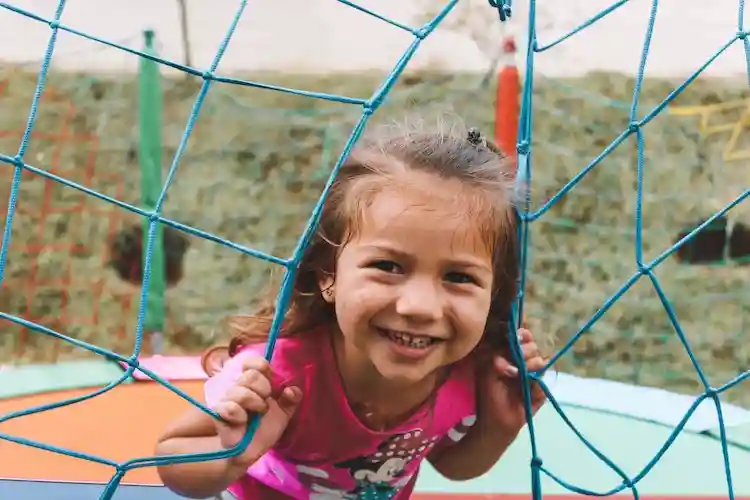One of the best things about being a parent is being able to watch your children as they grow and experience and learn new things.
There is nothing like seeing the wonder on your child’s face as they do something for the first time in their lives, like going for their first swim or seeing snow for the first time.
But as a parent, you also have the responsibility to teach your children some essential life skills and equip them for the future. And there are some things they can’t and shouldn’t try to learn independently.
And that’s because some of those things can be potentially dangerous – for example, climbing ladders. It sounds funny because, for adults, that’s a normal mundane thing.
But for kids, learning to climb a ladder can be difficult and a little dangerous. Teaching your child to climb a ladder requires patience, care, and effort. We will try and help you with that in this article and give you some tips.
Here Are Our Six Tips for Teaching Your Child to Climb a Ladder
It is hard sometimes as an adult to put yourself in your child’s shoes. From your perspective, climbing a ladder is laughably easy, but for them, it is a big undertaking. It requires good balance and spatial awareness.
Also, kids can be fearless and reckless. That’s why they shouldn’t attempt to do this unsupervised. You need to always be there for any possible accidents.
Remember that it is the little things (like climbing ladders) through which children learn about being resilient and how not to be quitters. So take your time, put these tips we give you to good use, and teach your kid how to climb a ladder.
- Make sure it is safe
- Show them how to do it
- Never leave your child unsupervised
- Be supportive
- Don’t overreact
- Teach them to climb down as well

Safety Comes First
You first need to ensure all possible safety measures are put in place before letting your child attempt to climb the ladder. You start by picking the appropriate ladders for your child. You might think choosing the right leaders is no big deal, but it is.
If you pick the ladders with a huge gap between the steps, your child will have difficulty climbing them. Please make sure they are child appropriate. Also, avoid any old rusty ladders with broken steps, as they are a big hazard.
The next thing to ensure maximum safety is to place foam mats around the ladders. Just in case an accident happens or someone slips and falls. It’s better to be safe than sorry. And this is a handy tip not just when teaching your child how to climb ladders but also when keeping kids safe on moving day.
On moving day, there are usually ladders around the house, so you should take some safety measures just in case a child tries to climb them unsupervised.

Show Them
Children often mimic the behavior of the adults in their life. And when it comes to teaching your child to climb a ladder, you can use this to your advantage. Before you let your child try and climb the ladder themselves, you do it first so they can see. But you must do it properly and carefully.
First, use both hands to stabilize the ladder before you climb the first step, and make sure your kid sees that. You have to insist on safety at every step.
Then go slowly, step by step. Don’t skip steps so you can climb faster. Your child will see that and try to imitate it, and that can be dangerous.
And as you are climbing, keep both of your hands fixated on the sides of the ladders. It will teach your child to be careful.
Don’t underestimate a child’s ability to copy exactly what you are doing. Try and be aware of it as much as you can.
Never Leave the Child Unsupervised
While teaching your child how to climb ladders, it is essential never to leave them unsupervised. No matter how safe you make the environment with foam mats, nothing can replace a parent’s watchful eye.
As we said, this can be risky, and accidents may happen. Ensure you are always there to catch your child if it slips or trips on the steps. And when you finish teaching ladder climbing for the day, always remove the stairs and store them somewhere where the kids can’t reach them.
Kids will want to impress you and may try to practice climbing on their own. That’s why it is so important that they can’t reach the ladders. The other reason you should be there at all times is so you can give your child support.
Kids like being encouraged and cheered on, especially by their parents. They are less likely to give up if you are there to support and motivate them.

Be Supportive
As we said, children will need your support. Make sure you are always encouraging them and not criticizing them. With young kids, it is really easy to make them feel discouraged if you criticize them too intensely.
It doesn’t matter if they learn to climb after one lesson or after five; you shouldn’t make them feel like a failure. Patience is also vital. If they don’t get it after a while, show them again how to do it safely and properly.
Build their confidence by cheering them on, and instead of yelling at them when they make a mistake, use thoughtful criticism. Try and explain to them that this can be potentially dangerous and that they should listen to your advice and not make any sudden moves.
Don’t Freak Out
Sometimes no matter how well-prepared you are, accidents still happen. But you must keep your composure in these situations. Chances are that if your kid does slip and falls on the foam mat or has a little scratch, it won’t be anything serious.
If you get too upset and make a big deal out of it, so will your kid. Kids take emotional cues from their parents, and if they sense fear from you, they will be afraid too. And if they start feeling afraid of climbing ladders when they are so young, that will follow them through their adult life.
But if you help them when they fall off the ladder and help them try again, it will be an excellent lesson for the future. Of course, if serious injuries occur, you shouldn’t force your kids to try again.
And if you see that your child has had enough and doesn’t feel like attempting anymore, let them stop. They will come to you when they are ready. The same goes if your kids are really scared of ladders. Don’t force something they are terrified of upon them. It will only make it worse. Let them take their time.
Teach Them how To Climb Down
Learning how to climb a ladder also means learning how to climb down. It might sound silly, but kids sometimes have a tough time with this. Climbing down the ladder can be scarier for kids because it is harder to see where you are going than when climbing up.
You should do the same thing you did when teaching them to climb up. Insist on safety and demonstrate how to do it properly. When climbing down, keep both hands on the ladders at all times. And go down slowly, step by step.
Then when you let them try, keep both of your hands on the ladders still so you make sure they don’t shake and scare the kids. You can rely on your vision less when climbing down, so you need to focus more on the feeling. After a while of climbing up and down, kids will learn instinctively where the next step is when putting their foot down the ladder.
In Conclusion
Hopefully, these tips for teaching your child to climb a ladder were helpful to you. But you probably knew all of this already. The most important thing is that you don’t let your child out of your sight while climbing.
No matter how capable you think your child is, it is still a child and needs parental support and guidance. Safety should always come first. Never attempt this with broken or old ladders because that could lead to injury.
Also, the first few times your child attempts to climb on their own, keep your hands on the ladders. This will keep the stairs firmly in place and give your kids a feeling of safety. And as always, when it comes to kids, you need to be supportive. Even if they make a mistake, be gentle and help them try again. And if they don’t want to do it, give them some time.
Image credits – Photos by Bruna Saito, Yan Krukov, Anete Lusina, and Pavel Danilyuk on Pexels
Joseph is the owner of LadderGeek. He is a home remodeling enthusiast. He has created this blog to share some of his knowledge on Ladder and accessories.



